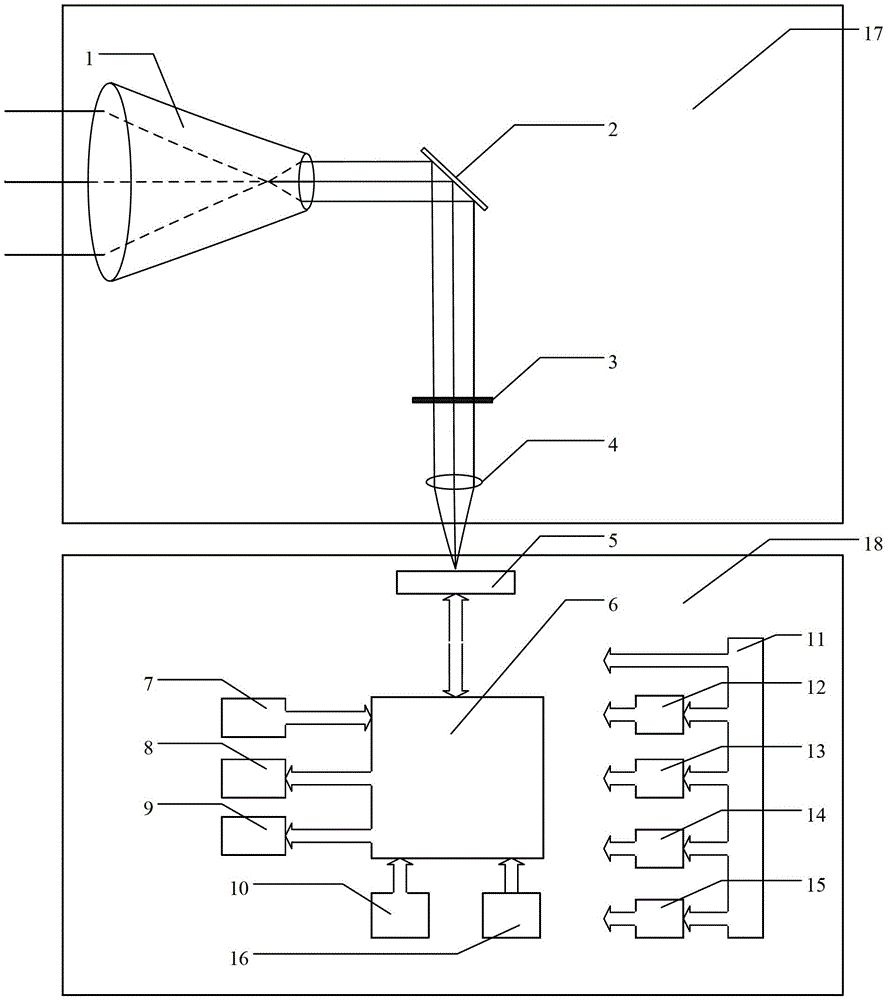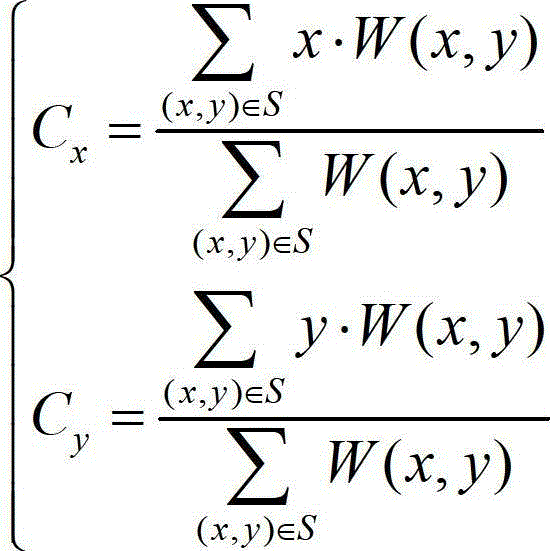A light spot detection camera and detection method of a spaceborne laser communication ATP system
A laser communication and space-borne technology, which is applied in photometry, image communication, and TV system components using electric radiation detectors, can solve problems such as low integration, tailing, and small detection front, and achieve Avoid halo phenomenon, improve frame rate, and avoid the effect of image data transmission
- Summary
- Abstract
- Description
- Claims
- Application Information
AI Technical Summary
Problems solved by technology
Method used
Image
Examples
Embodiment approach
[0033] 1. After the camera starts to work, the FPGA configuration chip 10 (PROM chip XCF16PVO48C produced by XILINX) first writes the program into the FPGA chip 6 (XQ2VP40 field programmable array produced by XILINX). 5V voltage is provided by 5V DC power supply 11, 5V to 3.3V voltage conversion chip 12 (MSK5232-1.8HTS produced by MSK company) provides 3.3V voltage, 5V to 2.5V voltage conversion chip 13 (MSK5232-2.5HTS produced by MSK company) Provide 2.5V voltage, 5V to 1.8V voltage conversion chip 14 (MSK5232-1.8HTS produced by MSK company) provides 1.8V voltage, 5V to 1.5V voltage conversion chip 15 (MSK5232-1.5HTS produced by MSK company) Provide 1.5V voltage . The clock chip 16 (QT78LD9M-48MHZ produced by Q-TECH Company) provides the FPGA chip 6 with a 48MHz system operating clock.
[0034] 2. During space laser communication, the receiving telescope 1 (transmissive or reflective telescope system, with a magnification of 8 times) receives the beam, passes through the r...
PUM
 Login to View More
Login to View More Abstract
Description
Claims
Application Information
 Login to View More
Login to View More - R&D
- Intellectual Property
- Life Sciences
- Materials
- Tech Scout
- Unparalleled Data Quality
- Higher Quality Content
- 60% Fewer Hallucinations
Browse by: Latest US Patents, China's latest patents, Technical Efficacy Thesaurus, Application Domain, Technology Topic, Popular Technical Reports.
© 2025 PatSnap. All rights reserved.Legal|Privacy policy|Modern Slavery Act Transparency Statement|Sitemap|About US| Contact US: help@patsnap.com



